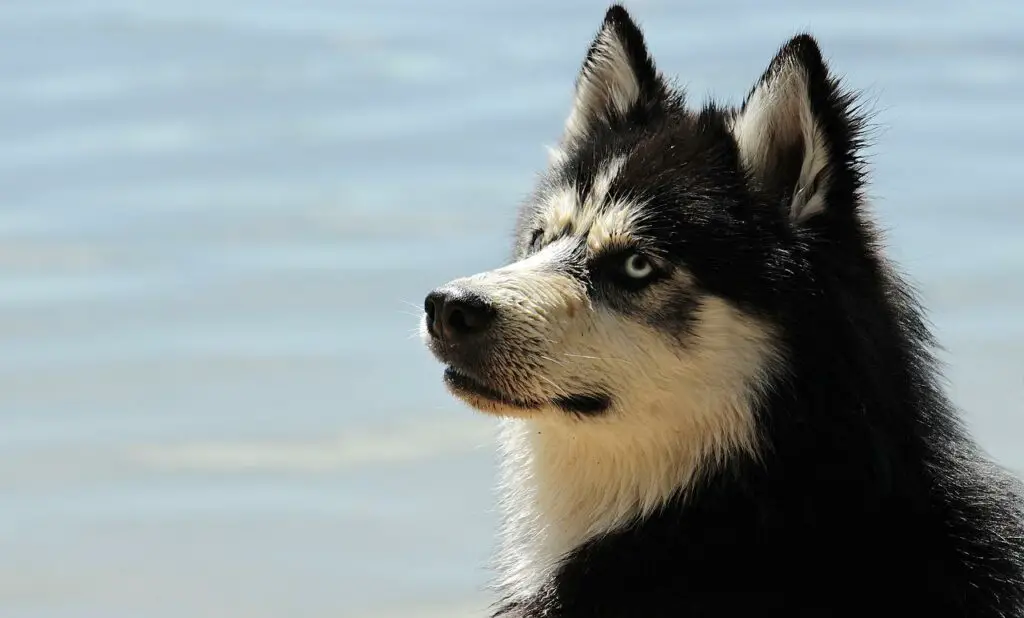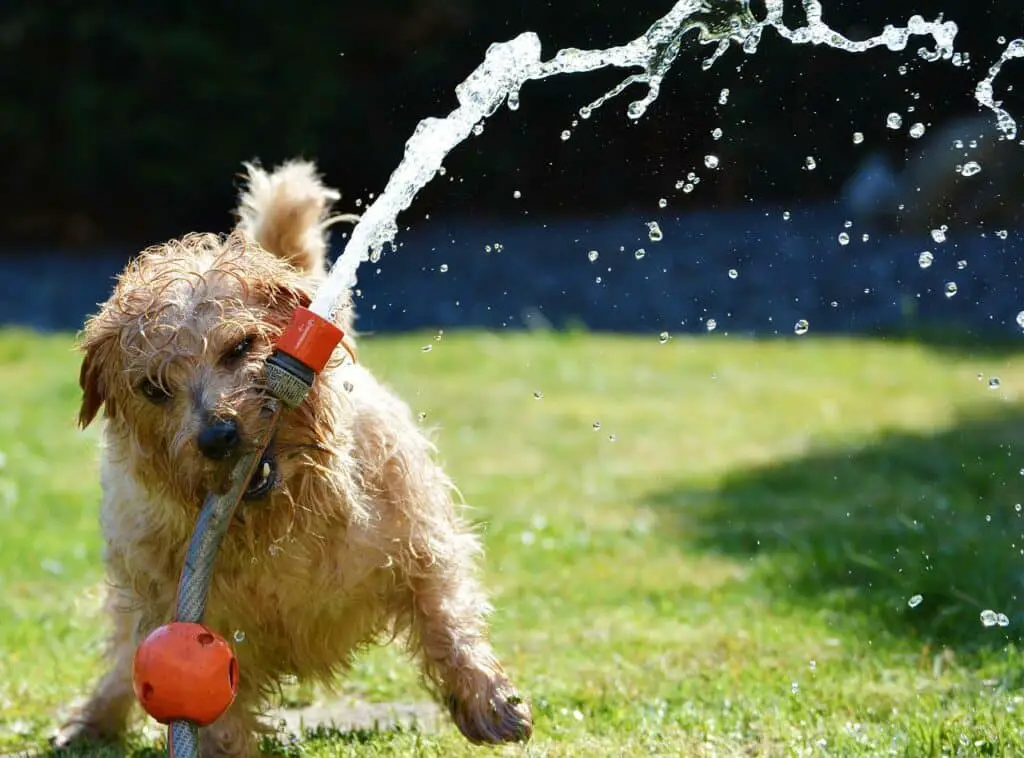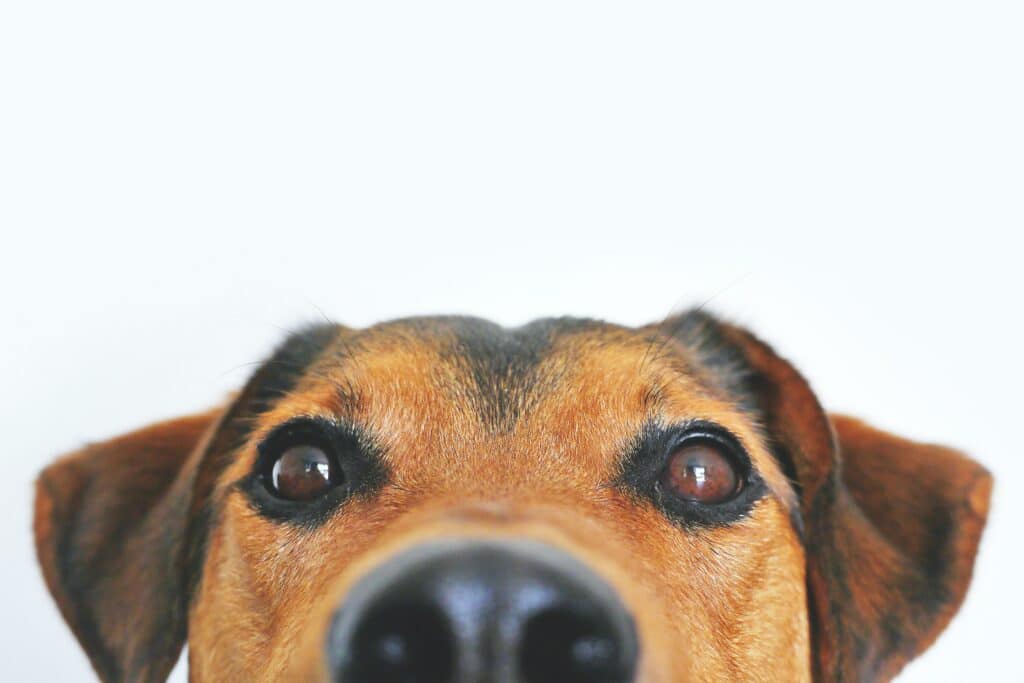It’s summertime, and the weather is hot.
What could be more refreshing and wholesome for your pup than cool water from the hose?
You may have even given your dog a drink from the hose without thinking twice, but how safe is it for your dog to drink from the hose?
Can dogs drink hose water?
Dogs can drink hose water, but it isn’t safe.
While hose water is usually clean, it can contain harmful chemicals predisposing your dog to sickness.
For instance, if the hose is old and made of lead, it can be toxic to your dog.
Let your fido drink refreshing water from a filtered hose or use a pet water fountain.
This article provides more information on the risks of letting your dog drink from a hose and what are some safe alternatives.

Is it Safe for My Dog to Drink Hose Water?
Unlike the plumbing inside your house, hose water isn’t meant to deliver safe drinking water.
In fact, according to the Environmental Protection Agency (EPA), your hose could be full of harmful chemicals like:
Hose Water may Contain Lead
Lead is a heavy metal that’s toxic to dogs.
It enters your water through old lead pipes or new solder.
If you have an older home, there’s a greater chance that your hose water contains lead.
Contact your water provider or local health department to find out if your home has lead pipes.
You can also have your water tested for lead. Lead is poisonous to dogs and can cause:
- Vomiting
- Diarrhea
- Lethargy
- Seizures
- Coma
- Kidney disease.
Hose Water may Contain Pesticides and Fertilizers
Pesticides and fertilizers are commonly used in yards and gardens.
When it rains, these chemicals run off into storm drains and contaminate local waterways.
These substances leach into your hose water and can harm your dog if ingested.
Pesticides and fertilizers cause:
- Allergic reactions
- Eye irritation
- Liver damage
- Cancer
- Excessive drooling
- Gastrointestinal upset.
Contain Bacteria and Viruses
While most hose water is clean, it gets contaminated with bacteria and viruses.
These contaminants cause gastrointestinal upset, including vomiting and diarrhea.
In some cases, your dog may even develop an infection.
Hose Water may have BPA and Phthalates
These two chemicals are found in some hoses and can leach into the water.
BPA is a known endocrine disruptor that interferes with your dog’s hormones.
Phthalates are linked to reproductive problems and birth defects.
Dogs that drink water contaminated with BPA or phthalates may experience:
- Infertility
- Congenital disabilities
- Cancer
- Hormone imbalances.

How Can I Minimize the Risks Above?
The above risks confirm that it’s not safe for your dog to drink from a hose.
However, there are some steps you can take to minimize the risks:
Let the Water Run
Before allowing your dog to drink from the hose, let the water run for a few minutes.
This helps flush out any contaminants that may be in the water.
Contaminants sit in an idle hose and leach into the water.
Use a Pet Water Fountain
A pet water fountain is a great way to give your dog fresh, filtered water.
These devices have filters that remove contaminants from the water.
Moreover, they have a constant flow of water, which helps keep the water fresh.
Use a Filtered Hose
If you’re going to let your dog drink from the hose, use a filtered hose.
These hoses remove contaminants like lead, pesticides, and fertilizers.
Besides using a filtered hose, you should also:
- Replace your hose every five years.
- Clean your hose with vinegar and water.
- Inspect your hose for cracks or leaks.
Properly Store the Hose
Allowing your hose to sit in the sun causes the chemicals to leach into the water.
When you’re finished using the hose, store it in a cool, dark place.
Direct sunlight and warm temperatures increase the degradation of polymers, which causes chemicals to leach into the water.
Thus, slow these processes by storing your hose properly.
Replace with Safer Alternatives
Natural rubbers and polyethylene are safer materials for hoses.
These materials don’t contain BPA or phthalates, making them a safer choice for your dog.
Thus, read labels when purchasing a new hose and choose one made with natural rubbers or polyethylene.
While these are safe alternatives, still allow water to run from the hose for a few minutes before your dog drinks.

Why does my Dog like Playing with a Hose?
Lots of dogs enjoy water play, including playing with a hose.
As long as it gets wet, your dog doesn’t care where the water comes from.
Moreover, dogs are attracted to the movement of water.
The flowing water is intriguing and may even look like a toy to your dog.
If you have a hose and your dog enjoys playing with it, there are some ways to make it safer:
Use a nozzle that has a shut-off valve.
This way, you can control the water flow and prevent your dog from drinking too much at once.
Position the nozzle above your dog’s head.
Thus, water flows over your dog instead of into its mouth.
Keep the water pressure low.
A high-pressure stream of water is harmful to your dog’s eyes, ears, and nose.
Use a pet water fountain.
These devices have filters that remove contaminants from the water.
Moreover, they have a constant flow of water, which helps keep the water fresh.
FAQs
Is hose water the same as tap water?
Hose water and tap water aren’t the same.
Tap water goes through a filtration process, which removes contaminants.
Hose water doesn’t go through this process and may contain impurities like lead, pesticides, and fertilizers.
Can I give my dog hose water to cool down?
You can use hose water to help your dog cool down on a hot day.
However, don’t let your dog drink too much at once.
Moreover, avoid spraying water directly on your dog’s face.
Doing so can cause respiratory problems.
Is it illegal to hose down my dog?
Hosing down your dog isn’t illegal.
However, you should avoid using a high-pressure stream of water, as it can harm your dog
Conclusion
As a pet owner, you want to do everything to ensure your furry friend is healthy and happy.
This means ensuring they have access to clean water.
Although hose water is usually clean, many risks come with it.
Old hose pipes made of lead are toxic to your dog if ingested.
Lead poisoning isn’t the only concern with hose water.
If the water sits in the sun, it can leach chemicals into the water.
These chemicals include BPA and phthalates, which are harmful to your dog.
It’s best to avoid giving your dog hose water altogether.
If you must use hose water, take precautions like using a filtered hose and storing the hose properly.
You should also consider replacing your hose with a safer alternative, such as one made of natural rubber or polyethylene.
- Why Does My Dog Lick My Other Dogs Face? - September 6, 2022
- Why Does My Rottweiler Lick My Feet ? - September 6, 2022
- Why Doesn’t My Dog Make Any Noise ? - September 5, 2022








